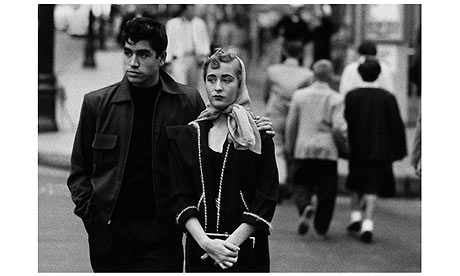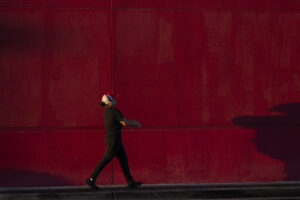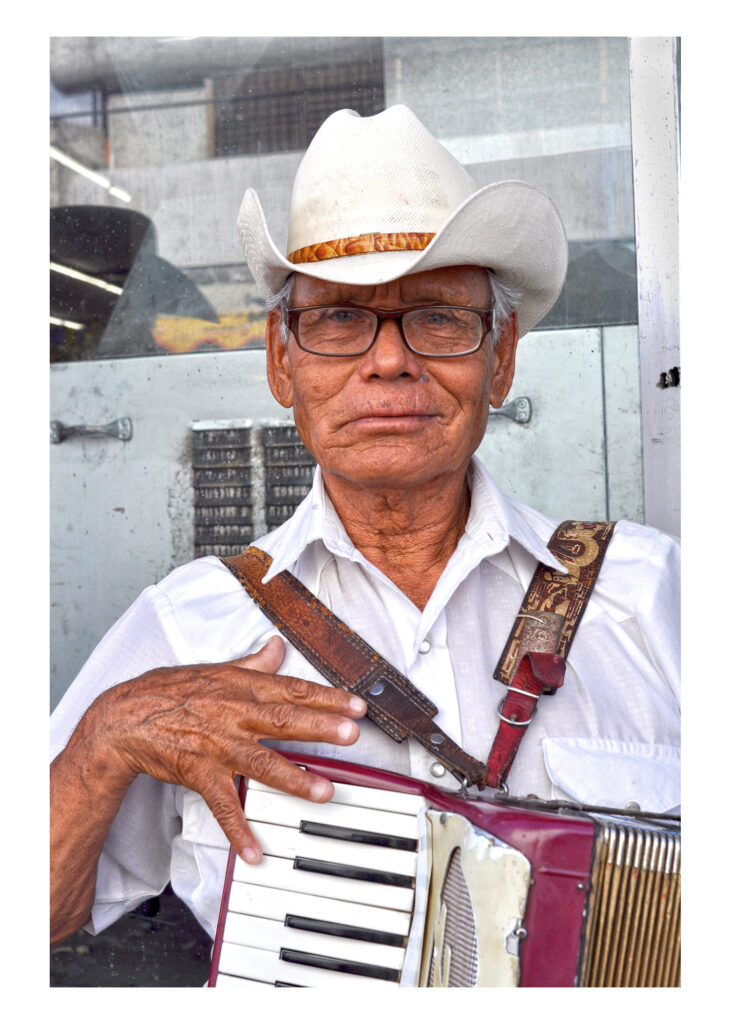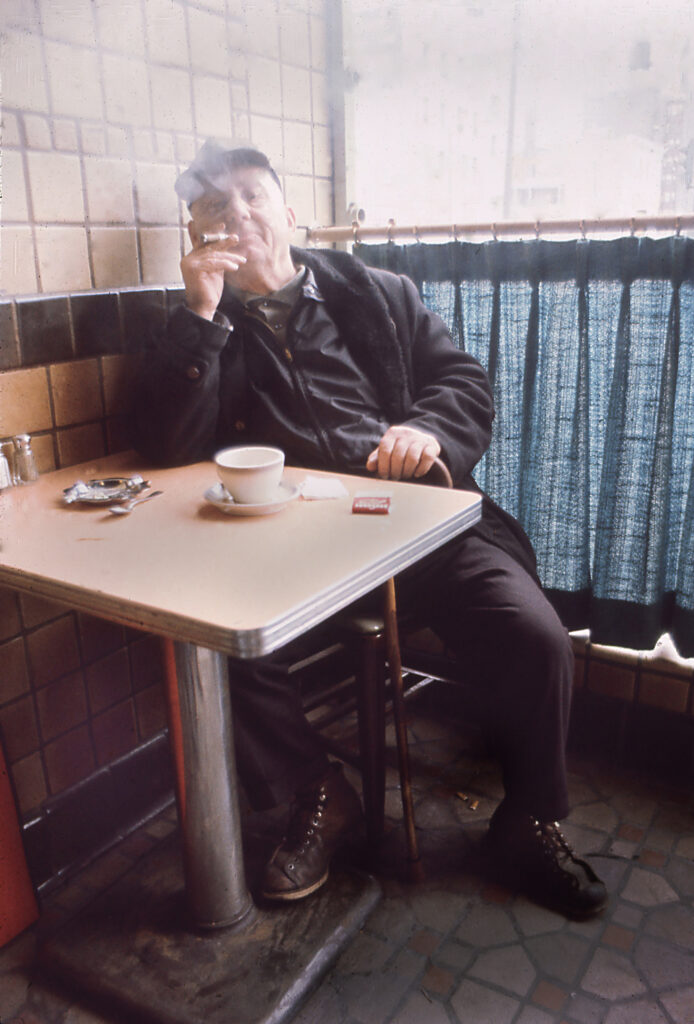Photojournalism and Robert Frank

Chattanooga, Tennesse, 1955, Robert Frank photograph
1) The Oxford Dictionary defines photojournalism as, “The art or practice of communicating news by photographs, especially in magazines[1].” However, my definition is a much more complex explanation. I would define photojournalism as a real, human experience captured in a photograph that represents a story or event. These events stem from many perspectives and they may not always harbor Hollywood tendencies, but they represent truth…
2) Street photography and documentary photography differ in a photographer’s expectations. The website F-8 has described the difference as, “Street photography is concerned about the instant, documentary is concerned about the sequence[2].” The overall expectation of the street photographer is often a single story in one photographer, unlike a documentary photographer who captures several images regarding one story. There appears to be less routine in street photography and more consistency in documentary styles.
3) Photojournalists earn a living through contracts with publications, on-call employment, publishing, exhibitions, and found jobs. The photographer Richard Avedon started in the 1940’s as an ID photographer for the military during his service[3]. He started free-lance work at the age of 22 and went on to photograph for publications like “Harpers Bazaar” and “Life”[4]. In the 1960’s he joined “Vogue” and worked there for many years[5]. There’s many media publications to photograph for, odd jobs, and a demand for images.
4) The American Society of Media Photographers, originally called when it began in the 1940’s, the American Society of Magazine photographers is a photographer organization. As a student it the price cost 45$ a year, as associate member pays $225 per year, and the professional members pay $335 for one year, the member benefits include educational seminars, networking, insurance, and advocacy[6]. Members are also given opportunities to win awards, scholarships, and fellowships. I would join to state that I am a member of the same society as Richard Avedon, W. Eugene Smith, and Henri-Cartier Bresson were in its early founding’s.
5) Three photo agencies include Magnum Photo’s, the Associate Press, and Getty Images[7]. These agencies promote photographers work, license specific assignments, and marketing.
6) Photojournalism began roughly in the 1850’s after advances in photography involving the wet-plate negative processes and kept advancing until the film roll was introduced in the 1880’s[8]. These advances no longer made it necessary for the dark room to be logged around, but preserved an image long enough for photography to become more portable. The Crimean war in the 1850’s was covered by photographers such as Roger Fenton and other contributors to the movement involved publications like Life that began in the 1880’s[9].
7) The golden age of photojournalism ranges from the 1920’s and carries on the 1950’s[10]. During this period there was the depression, social prejudice, and emerging daily newspapers[11]. Three photographers who contributed to this age include Walker Evans, Gordon Parks, and Dorothea Lange[12].
8) Modern photojournalism publications such as The New York Times Lens Blog and National Geographic are credible forums for cotemporary sources[13].
9) A contemporary photojournalist I admire is Robert Frank, his work in “the Americans” captured aspects of American Society involving class and race[14].
[1] “Definition of Photojournalism in English:.” Oxford Dictionaries. Accessed August 30, 2014. http://www.oxforddictionaries.com/us/definition/american_english/photojournalism. [2] “THE FUNDAMENTAL DIFFERENCE BETWEEN STREET PHOTOGRAPHY AND DOCUMENTARY PHOTOGRAPHY.” F-Stop 8. Accessed August 30, 2014. http://www.f-stopeight.com/the-fundamental-difference-between-street-photography-and-documentary-photography/. [3] “About Richard Avedon.” Avendon Foundation. Accessed August 30, 2014. http://www.avedonfoundation.org/about/. [4] “About Richard Avedon.” Avendon Foundation. Accessed August 30, 2014. http://www.avedonfoundation.org/about/. [5] “About Richard Avedon.” Avendon Foundation. Accessed August 30, 2014. http://www.avedonfoundation.org/about/. [6] “Memeber Benefits.” American Society of Media Photographers. Accessed August 30, 2014. https://asmp.org/benefits#ben5. [7] “Stock Photo Agencies.” A Photo Editor. Accessed August 30, 2014. http://www.aphotoeditor.com/2008/02/27/stock-photo-agencies/. [8] “History of Photography and the Camera.” About. Accessed August 30, 2014. http://inventors.about.com/od/pstartinventions/a/stilphotography.htm. [9] “CRIMEAN WAR PHOTOGRAPHS by ROGER FENTON, MARCH-JUNE 1855.” All World Wars. Accessed August 30, 2014. http://www.allworldwars.com/Crimean-War-Photographs-by-Roger-Fenton-1855.html. http://en.wikipedia.org/wiki/Life_(magazine) [10] Stovall, James Glen. “Magazines and Photojournalism’s Golden Age.” Journalism, Who, What, When, Where, Why, and How. Accessed August 30, 2014. http://www.ablongman.com/stovall1e/chap05/05goldagephotog.html. [11] “History of Photojournalism.” Accessed August 30, 2014. http://www4.ncsu.edu/~mfchandl/page1.html. [12] Stovall, James Glen. “Magazines and Photojournalism’s Golden Age.” Journalism, Who, What, When, Where, Why, and How. Accessed August 30, 2014. http://www.ablongman.com/stovall1e/chap05/05goldagephotog.html. [13]The New York Times Lens. Accessed August 30, 2014. http://lens.blogs.nytimes.com/. National Geographic. Accessed August 30, 2014. http://www.nationalgeographic.com/. [14] “Robert Frank Biography.” At Get Photography. Accessed August 30, 2014. http://www.atgetphotography.com/The-Photographers/Robert-Frank.html.





